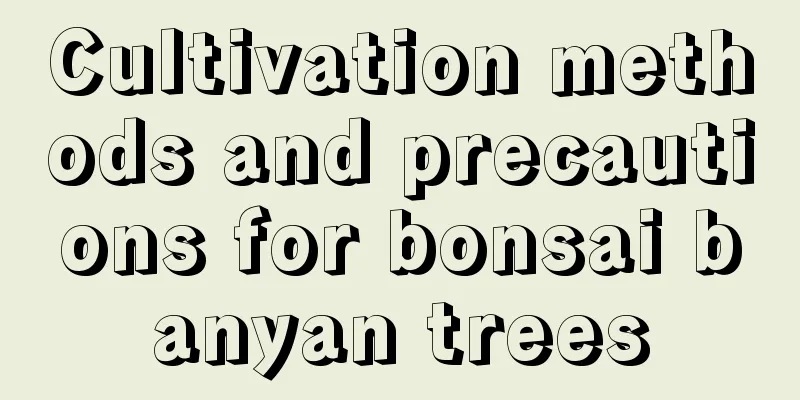Cultivation methods and precautions of Ligustrum lucidum

1. Maintenance methods1. Soil: The soil requirements for growing Ligustrum lucidum are not high, ordinary clay soil is enough. Loose and breathable soil can promote better growth and help the plant roots breathe and absorb nutrients. 2. Water: Just water it normally. As the plant grows stronger, you can increase the amount of water appropriately, but don't let water accumulate. 3. Nutrients: Before planting, you should evenly sprinkle a layer of compound fertilizer on the soil, then turn it over and stir it so that the fertilizer and soil are evenly mixed. 4. Light: Adequate light can make its branches and leaves thick and full, and it also has strong shade tolerance. However, it is not suitable for direct exposure to strong light, which will cause damage to the branches and leaves and affect normal growth. 2. Breeding techniques1. Pruning: After growing for a period of time, the top branches and leaves will wilt and turn yellow, and the new branches below will be weak due to lack of ventilation and light. They need to be properly pruned to allow ventilation and light to pass through, and to have a round shape for better growth. 2. Reproduction: It can be propagated by cuttings. In spring, cut off strong and thicker branches, insert them in soil with sufficient nutrients, and then spray some water to keep them moist. 3. Problem diagnosis and treatment1. Ligustrum lucidum looper: Ligustrum lucidum looper is a common pest of Ligustrum lucidum. Improper prevention and control will cause serious damage to its branches and leaves. Use diluted diflubenzuron to spray the insects or directly capture and kill them. 2. Nocturnal brown spot: This disease will attack the leaves, causing black mold to appear around the leaves and then they will dry up and fall off. You can just dilute thiophanate-methyl and spray it, or you can use potassium permanganate to sterilize the soil before planting to take preventive measures in advance. IV. Other issues1. How to spend the winter: The temperature will be relatively low during the winter, so it needs to be moved indoors for maintenance. It is best to place it in a light-transmitting place. The temperature should not be lower than five degrees Celsius to avoid frostbite to the plants. 2. Can it be exposed to rain: Yes, it can be exposed to rain, as it is a moisture-loving plant. Rainwater can wash away the dust on its branches and leaves. It can be refreshed after being baptized by rainwater, but attention should also be paid to drainage to avoid water accumulation. |
<<: Cultivation methods and precautions of kapok trees
>>: Cultivation methods and precautions for potted hosta
Recommend
How to make the green radish take root quickly through cuttings and how to change the pot
1. Cutting method 1. Time selection: The time for...
The language and legend of lavender
The Flower Language of Lavender Waiting for love ...
What to do if the leaves of coleus become soft
1. Block out strong light Coleus likes plenty of ...
Oil bean planting technology and management
When planting oil beans, it is necessary to prepa...
How to grow ice berry succulents
1. Breeding environment 1. Soil: It likes organic...
How much is the yield of green onions per mu? How much is the profit of growing green onions per mu?
Onion yield per mu Under normal circumstances, th...
One egg can make the green radish grow wildly. Here is a trick to make the green radish grow wildly.
1. Pour the fermented egg white 1. Take out the e...
Precautions for using water for hydroponic succulents
Water quality for succulent hydroponics For hydro...
How to grow dahlia tubers
1. Planting method When planting dahlias, it is r...
How to propagate the vine of love (rooting in water, cuttings in soil)
1. Cutting method This is a more common method. F...
How to cultivate and manage corn in the seedling stage for high yield?
During the corn planting process, the growth rate...
How to plant Sijiu choy sum and how long does it take from sowing to harvesting?
Suitable planting time for 49 Chinese cabbage The...
When is the right time to plant chives?
Leek , a well-known vegetable , is grown in almos...
Are hydrangeas the same as hydrangeas?
1. Hydrangea In fact, our name for hydrangea is n...
The mint scented wood she bought... turned out to be fake. She had to figure it out quickly to avoid being cheated!
Common mint differences In summer, many flower lo...









